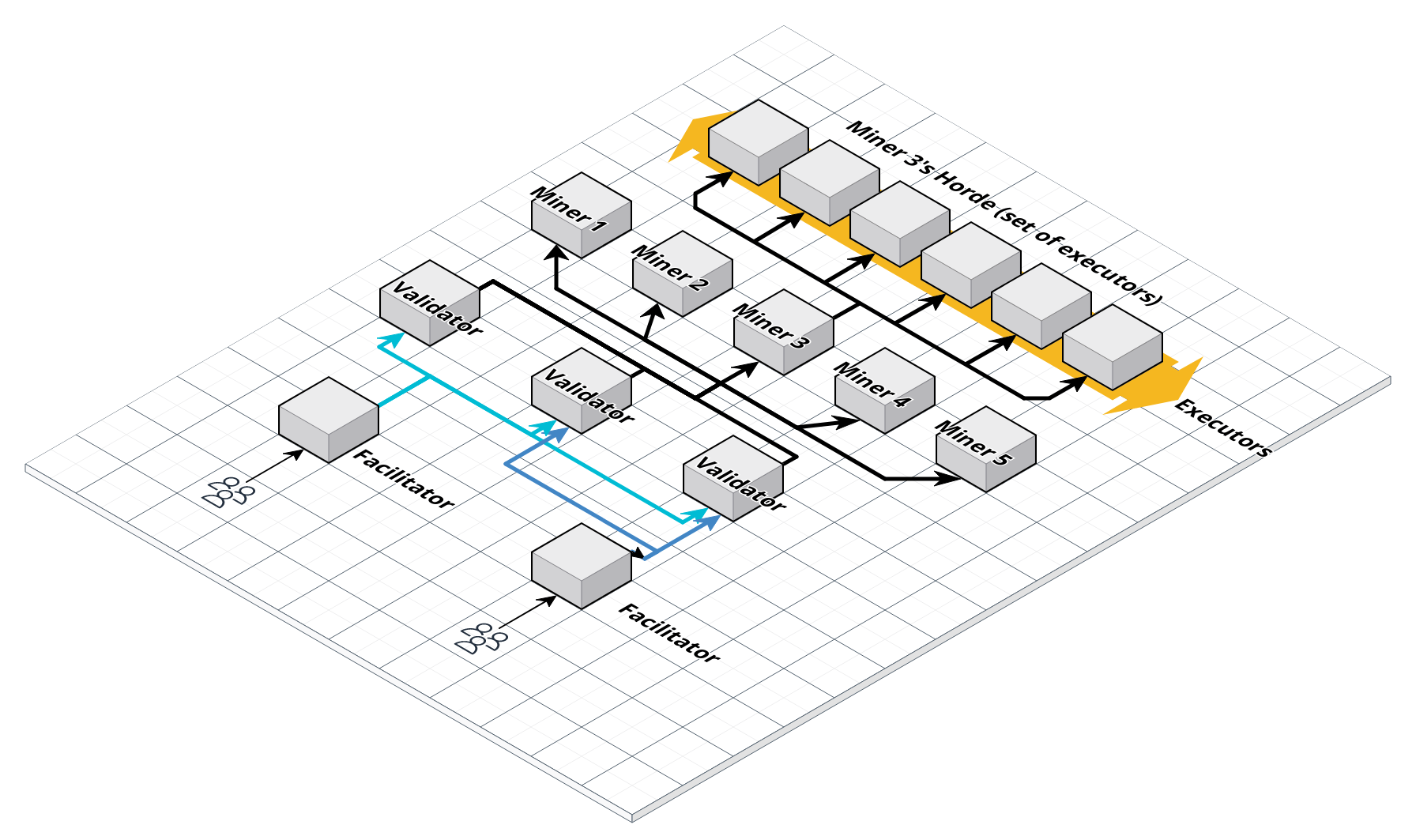This repository contains reference implementations of
- Validator
- Miner
- Executor
of the ComputeHorde BitTensor SubNet. Running etc. is explained in each component's README.
Data flow looks like this:
- Facilitator is an internet facing app charging users for accepting jobs from them, which are then passed on to validators.
- Validator has the same meaning as in other Bittensor subnets. It receives organic requests (requests from end users) or generates synthetic ones itself, sends them to miners and reads the results. Results for organic traffic are then passed back to end users, while synthetic traffic is used to adjust miners' scores. See validator's README for more details
- Miner has the same meaning as in other Bittensor subnets. It receives job requests from validators, spawns executors to do the actual work and sends the results back to validators. See miner's README for more details
- Executor is a virtual machine managed by a single miner, spawned to perform a single dockerized job, and is scrapped afterwards. Its access to the network is limited to necessary bits needed to execute a job, i.e. communicate with a miner, download the docker image that runs the job, download the docker image containing executor app, and mount the job data volume. Executors have hardware classes assigned and together form the horde of a miner. See executor's README for more details
Currently miners are rewarded for providing the time of networkless GPU-equipped servers, proportionally to their efficiency. Each miner can (for now) provide only their fastest Executor.
In February 2024 this will change - subnet will define more resource types andValidators will reward miners more for providing resources that are in higher demand. The system will quickly fill to capacity with organic traffic.
Refer to Miner runner README and to Validator runner README
